Object Record
Images
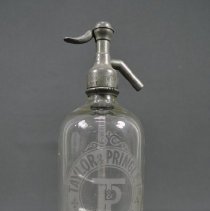
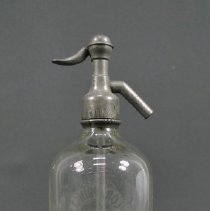
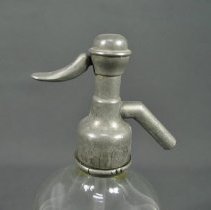
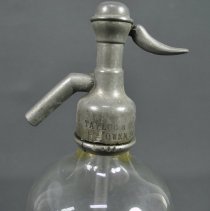
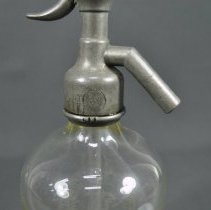
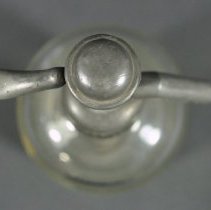
Additional Images [3]
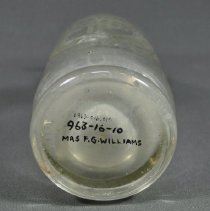

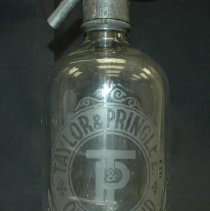
Metadata
Object ID # |
1963.016.010 |
Object Name |
Bottle, Seltzer |
Title |
Taylor & Pringle Soda Siphon Bottle |
Lexicon category |
4: T&E For Materials |
Year Range from |
1900 |
Year Range to |
1920 |
Artist |
British Syphon Mfg. Co. |
Made |
British Syphon Manufacturing Co. |
Place of Origin |
London, England, United Kingdom |
Description |
Glass and white lead soda bottle made for Taylor and Pringle (Owen Sound, Ont.). Syphon is stamped "British Syphon Manufacturing Co., London." It has an etched design on the front of the glass portion with a Taylor & Pringle trademark. |
Provenance |
The top (white lead) siphon piece was manufactured in London, England between 1900 and 1920 by the British Syphon Manufacturing Co. for the Taylor & Pringle bottling firm of Owen Sound, Grey County. (Note that John Corbett Pringle died in 1911, so it likely was before this date). In the 1990 film, "The "Pop" Works of Owen Sound; The Story of the Soft Drinks Industry and the Life of Wm. Taylor (1862-1925) as Chronicled by Wm. Humphrey Tayor (1909-1990)" (Grey County Archives), Humphrey Taylor says that the company produced this seltzer bottle between 1905 and 1930, but the top white lead piece (another Grey Roots seltzer bottle has one made in France) was so difficult and expensive to produce that they discontinued it in 1930. The bottle would have been filled upside down (Humphrey Taylor), used and returned to the Taylor & Pringle company for refilling. Later owned by Mrs. Frank G. Williams of Owen Sound. How and when she aquired it is unknown. |
Collection |
Food Processing Tools & Equipment |
Material |
Glass/Metal |
Dimensions |
H-30 Dia-9.5 cm |
Found |
Owen Sound, Grey County |
People |
Pringle, John Corbet Taylor, William |
Subjects |
Bottles Bottling industry Soda industry |
Search Terms |
Taylor & Pringle Owen Sound Industries and Products |
Function |
A refillable soda container, that would be re-used. Sometimes they are called soda siphon bottles or seltzer bottles. They were popular in the 1920s-1930s. |

